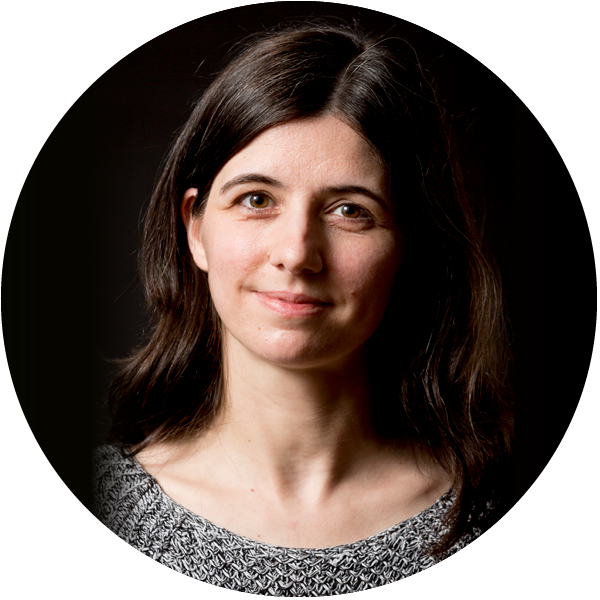
Project B02:
Cross-seasonal Investigation Regarding the Composition of atmospheric trace matter Up to UTLS heights – CIRCUS
Brief Summary
Refractory particles (RPs) were found in the UTLS in the winter Arctic vortex. The connection with subsiding air masses led to the conclusion of their meteoric origin, i.e., meteoric smoke particles (MSP) – recondensed vapours from meteoroid ablation on atmospheric entry. Observations over several years revealed an annual recurrence of this process. Results were corroborated by airborne aerosol mass spectrometry at various geographic locations, indicating a ubiquitous presence of meteoric particles (MPs) in the UTLS. RPs generally serve as nuclei for the condensation (e.g., H2SO4, HNO3, H2O) and/or as surfaces for heterogeneous chemical reactions. Spacecraft-induced particles (SiP), i.e. metallic particles from spacecraft re-entry additionally containing carbonaceous refractory particles, are also of increasing interest. As the optical properties of MPs and SiPs differ from those of pure sulphate/nitrate aerosols, a change in abundance or distribution might affect the radiation budget. Knowledge about the long-term trends of MP/SiP’s global distribution is currently lacking. While SiPs could be differentiated from MPs by physico-chemical methods, systematic investigations of their occurrence and a differentiation of both populations are missing. Thus, B02 aims at a long-term investigation of the presence/proportion of MPs and SiPs in the UTLS above Central Europe, in relationship to trace(r) substances from the troposphere and boundary layer. From a stationary launch site (Mainz) we will carry out balloon soundings over 18 months – yielding a cross seasonal survey – with 1-2 launches per month. The survey will provide a context for evaluating the data obtained in phase I and for other intensive observation periods (IOP). This context – i.e. variable pollution strength, weather conditions, convective/non-convective situations – will allow a classification of a shorter-term (21-day field mission at the Spielberg field site). With the IOP, individual strong uplift events will be assessed in relation to an aerosol cross-seasonal survey.
B02 aims at:
a) the long-term view on the presence/proportion of meteoric and spacecraft-induced particles in the UTLS over Central Europe,
b) linking observations of new particle formation to the vertical transport (frontal uplift) of precursors and trace substances, and
c) investigating the composition and formation/conversion processes in the troposphere.
Perspectives during balloon sounding at an altitude of 3 km (left) and 10.4 km (right).
Project Poster
Evaluation Poster Phase I in 2025
Members

Dr. Ralf Weigel
Principal Investigator
Johannes Gutenberg-Universität Mainz, Institut für Physik der Atmosphäre
weigelr[at]uni-mainz.de

Prof. Dr. Konrad Kandler
Principal Investigator
Technische Universität Darmstadt, Institut für Angewandte Geowissenschaften
kandler[at]geo.tu-darmstadt.de

Former Member Phase I:
Dr. Friederike Fachinger
Principal Investigator
Max-Planck-Institut für Chemie, Abteilung Partikelchemie

Former Member Phase I:
Lasse Moormann
Doctoral Candidate
Max-Planck-Institut für Chemie, Abteilung Partikelchemie

Former Member Phase I:
Luis Valero Tuya
Doctoral Candidate
Technische Universität Darmstadt, Institut für Angewandte Geowissenschaften
Johannes Gutenberg-Universität Mainz, Institut für Physik der Atmosphäre

Former Member Phase I:
Philipp Schuhmann
Technician
Max-Planck-Institut für Chemie, Abteilung Partikelchemie
Publications
Jost, S., R. Weigel, K. Kandler, L. Valero, J. Girdwood, C. Stopford, W. Stanley, L. K. Eichhorn, C. von Glahn, and H. Tost (2025): Improving the accuracy in particle concentration measurements of a balloon-borne optical particle counter, UCASS. Atmospheric Measurement Techniques 18 (17), 4397–4412. doi: 10.5194/amt-18-4397-2025.
Moormann, L., T. Böttger, P. Schuhmann, L. Valero Tuya, F. Fachinger, and F. Drewnick (2025a): The Flying Laboratory FLab: development and application of a UAS to measure aerosol particles and trace gases in the lower troposphere. Atmospheric Measurement Techniques 18 (6), 1441–1459. doi: 10.5194/amt-18-1441-2025.
Moormann, L., F. Fachinger, F. Drewnick, and H. Tost (2025b): Boundary Layer Dynamics after Rain Fronts: High-Resolution Reconstruction and Model Validation using ground- and drone-based Measurements. EGUsphere 2025, [Preprint], 1–23. doi: 10.5194/egusphere-2025-3862.
Ebert, M., R. Weigel, S. Weinbruch, L. Schneider, K. Kandler, S. Lauterbach, et al. (2024): Characterization of refractory aerosol particles collected in the tropical upper troposphere–lower stratosphere (UTLS) within the Asian tropopause aerosol layer (ATAL). Atmospheric Chem. Phys. 24 (8), 4771–4788. doi: 10.5194/acp-24-4771-2024.
Weigel, R.; C. Mahnke, M. Baumgartner, M. Krämer, P. Spichtinger, N. Spelten, A. Afchine, C. Rolf, S. Viciani, F. D’Amato, H. Tost and S. Borrmann; In situ observation of new particle formation (NPF) in the tropical tropopause layer of the 2017 Asian monsoon anticyclone – Part 2: NPF inside ice clouds; Atmos. Chem. Phys., 21, 13455–13481, https://doi.org/10.5194/acp-21-13455-2021, 2021.
Schneider, J., R. Weigel, T. Klimach, A. Dragoneas, O. Appel, A. Hünig, et al. (2021): Aircraft-based observation of meteoric material in lower-stratospheric aerosol particles between 15 and 68° N. Atmospheric Chem. Phys. 21 (2), 989–1013. doi: 10.5194/acp-21-989-2021.
Ebert, M., R. Weigel, K. Kandler, G. Gunther, S. Molleker, J. U. Grooß, et al. (2016): Chemical analysis of refractory stratospheric aerosol particles collected within the arctic vortex and inside polar stratospheric clouds. Atmospheric Chem. Phys. 16 (13), 8405–8421. doi: 10.5194/acp-16-8405-2016.
Kremser, S., L. W. Thomason, M. von Hobe, …, R. Weigel, et al. (2016): Stratospheric aerosol-Observations, processes, and impact on climate. Rev. Geophys. 54 (2), 278–335. doi: 10.1002/2015RG000511.
Weigel, R., C. M. Volk, K. Kandler, E. Hösen, G. Günther, B. Vogel, et al. (2014): Enhancements of the refractory submicron aerosol fraction in the Arctic polar vortex: feature or exception? Atmos. Chem. Phys. 14, 12319–12342. doi: 10.5194/acp-14-12319-2014.



